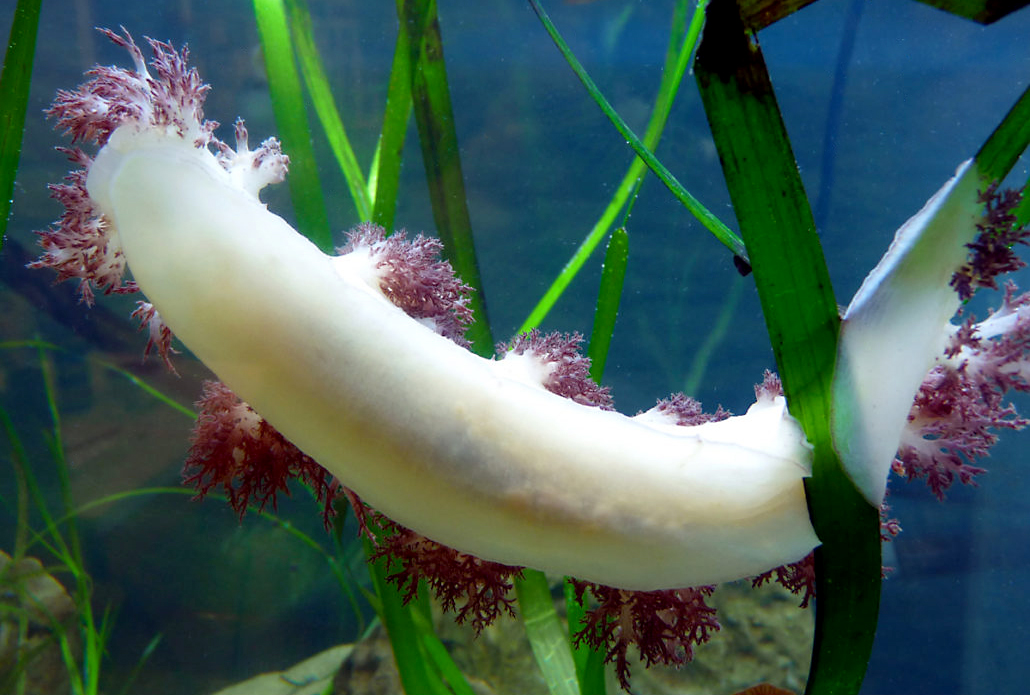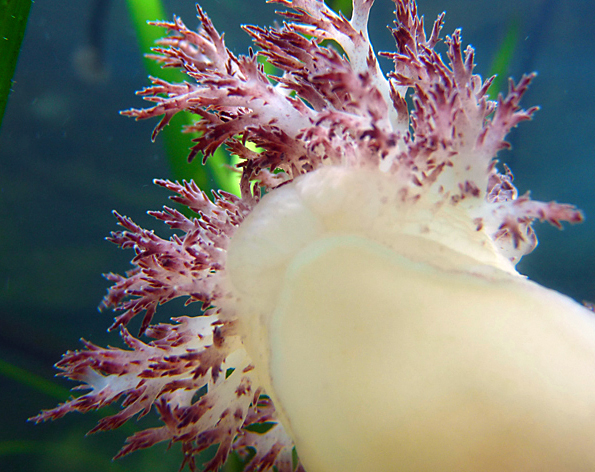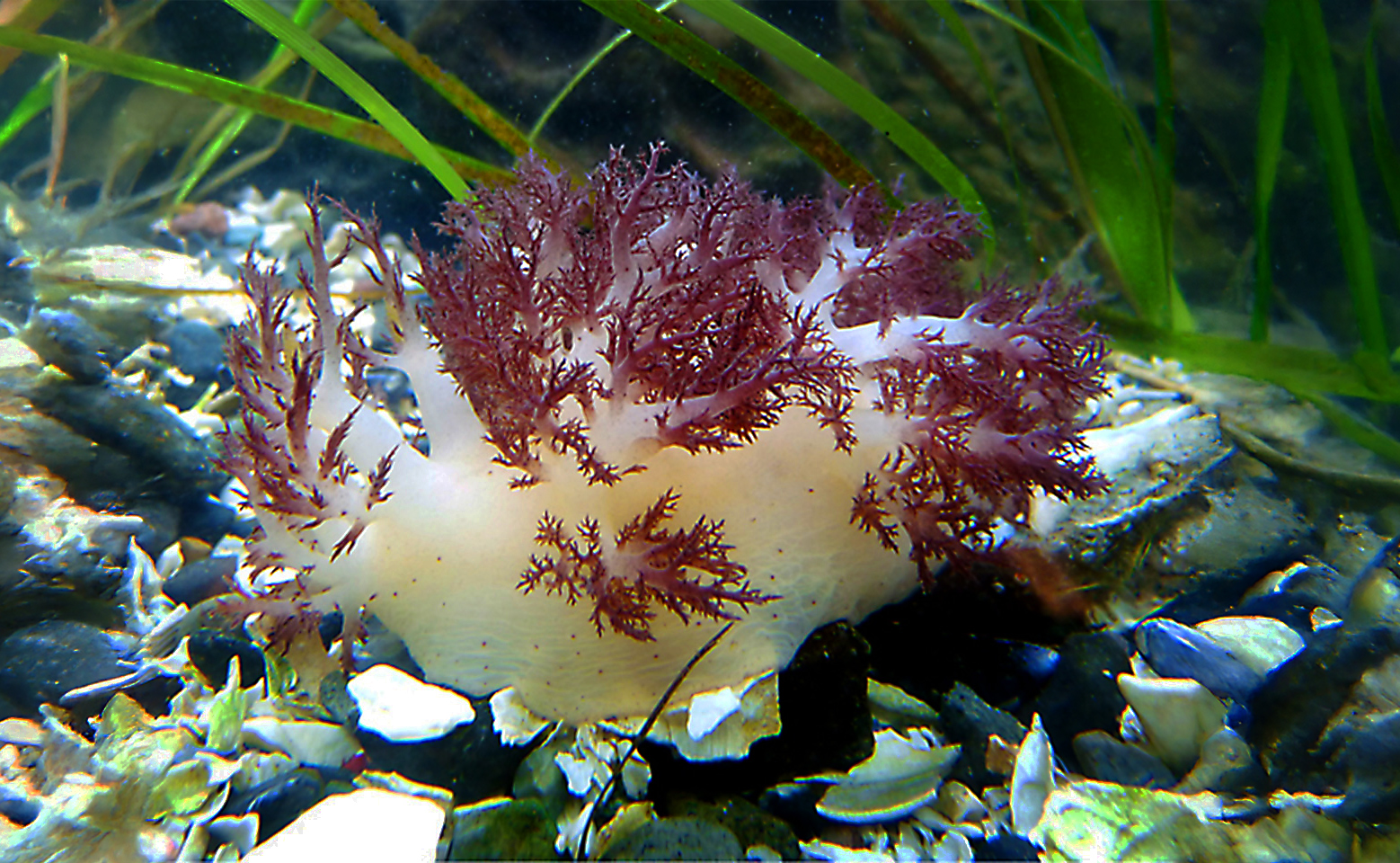Author: Kailey Garrett
Scientific name: Dendronotus rufus
Size range: up to 28 cm (11 in)
Identifying Features: Dendronotus rufus have stretched rectangular bodies with cerata that branch out at the edges. Their bodies are generally white and often have colors on the ends of the cerata which are generally a dark red but may also be dark brown, or a light pink. They are sometimes known as the Giant Red Sea Slug, because of their large size.
Habitat: The Red Dendronotid is usually found in southern Alaskan waters down to north Washington. They are mostly found in sub-tidal waters.

Prey: All known nudibranchs are carnivorous and usually eat live prey such as soft corals, sea pens, and gorgonians. This species feeds on hydroids and scyphozoans (jellyfish). It can be difficult keeping nudibranchs in captivity due to their specific food requirements.
Predators: There is no documented information on what hunts the Red Dendronotid but they almost certainly have chemicals, like most nudibranchs, that make them distateful. There is one documented case of the Red Dendronotid crawling on the back of a sun star (Pynopodia) that was on its egg mass and the sun star then “rapidly departed”.
Reproduction: Nudibranchs are hermaphrodites, and can mate with any member of their species. When mating, two nudibranchs come together side by side and pass sperm sacks through a tube. After mating, they lay their eggs in a gelatinous spiral, near the organism that they eat. Nudibranchs can lay up to two million eggs depending on the species. Usually, the eggs develop first into veliger larvae and after they hatch they drift around in the ocean currents as plankton. They they settle on the ocean floor to begin their adult life.

References:
Behrens, D. W., & Hermosillo, A. (2005). Eastern Pacific nudibranchs: a guide of the opisthobranchs from Alaska to Central America. Sea Challengers.
Kocian, J. (2007, April 30). Dendronotus rufus – egg predation 3. The Sea Slug Forum. Retrieved August 21, 2024, from http://www.seaslugforum.net/find/19592
Lamb, A. and Hanby, B. P. (2005). Marine Life of the Pacific Northwest. Madeira Park, BC: Harbour Publishing.
Microcosm aquarium explorer (2008) Dendronotid Nudibranchs, retrieved December 10, 2012 http://en.microcosmaquariumexplorer.com/wiki/Dendronotid_Nudibranchs
Nudibranchs, Basic Nudibranch Taxonomy, retrieved December 10, 2012. http://courses.washington.edu/mareco07/students/lisa/Lisa%20Hannon%20Nudibranch%20and%20Chiton%20Index_files/page0001.htm
National geographic (June 2008) Living Color, Toxic Nudibranchs-soft, seagoing slugs-produce a brilliant defense. Retrieved December 10, 2012. http://ngm.nationalgeographic.com/2008/06/nudibranchs/holland-text/2
Wikipedia (2 August 2010, at 07:46) Nudibranch, retrieved December 10 2012 http://creationwiki.org/Nudibranchs

